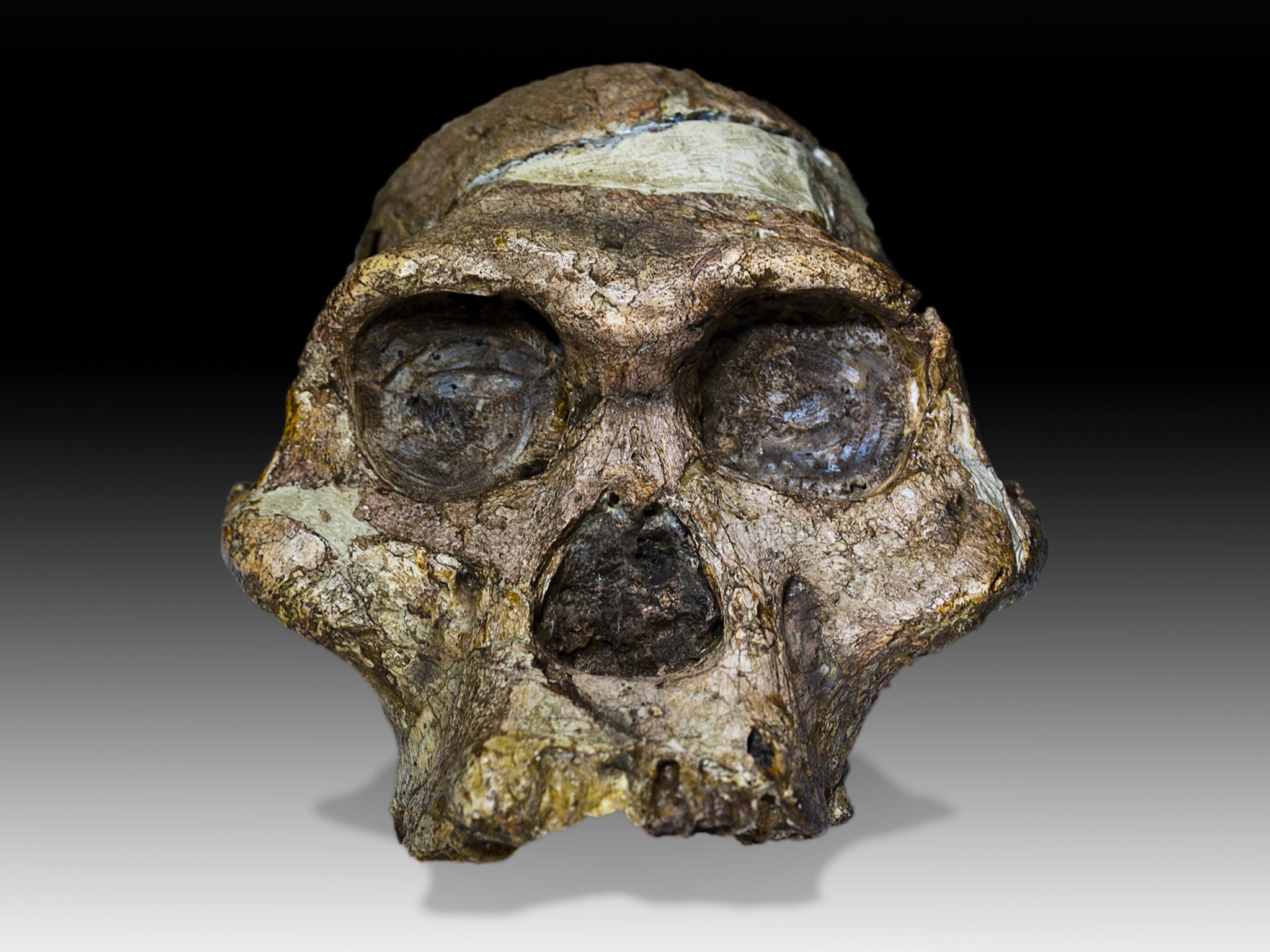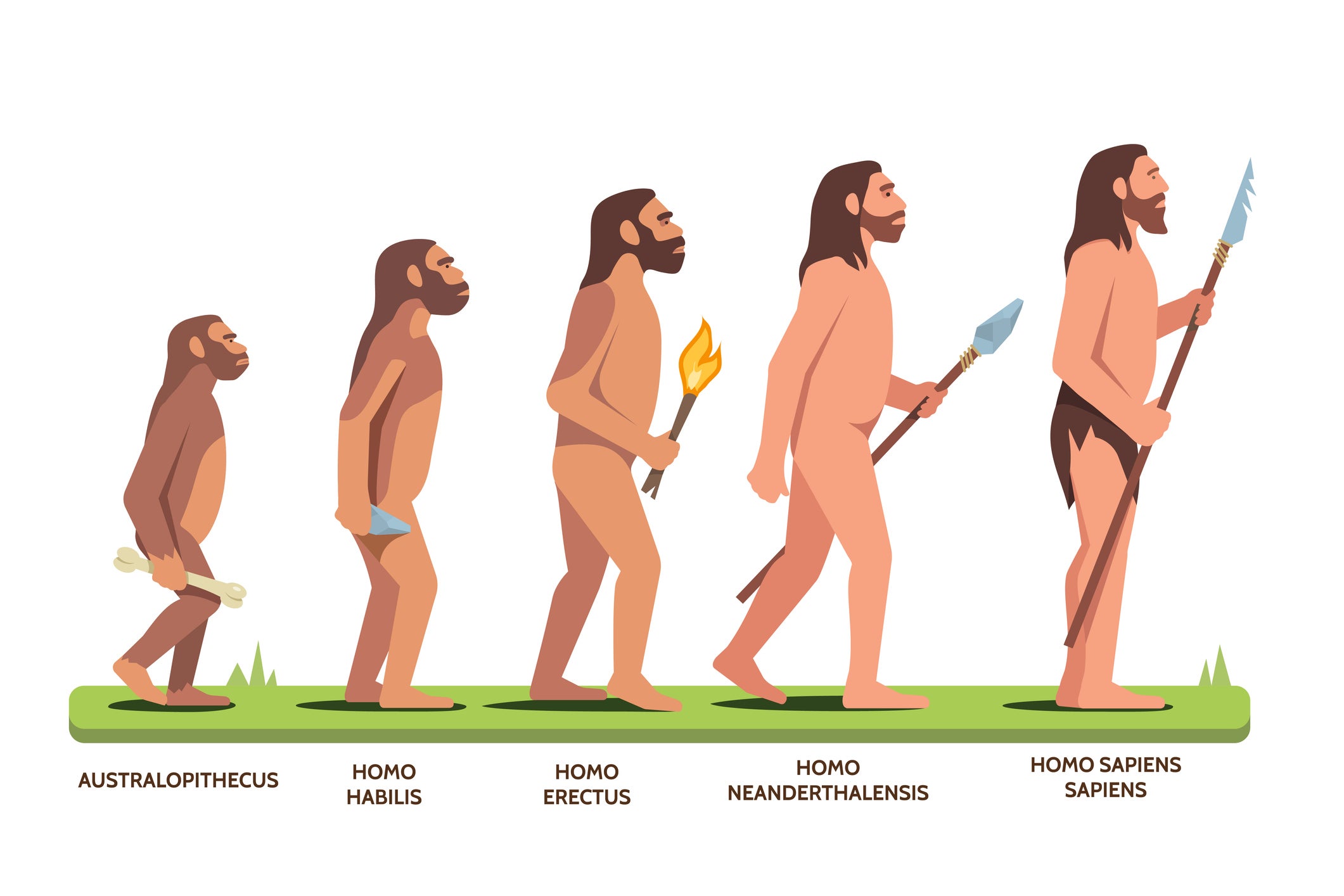Fossils in the ‘Cradle of Humankind’ may be more than a million years older than previously thought
Human ancestors appear to have been farther spread in an earlier era

Early human fossils dug up in the “Cradle of Humankind” in South Africa may be more than one million years older than thought, a new dating process suggests.
The Unesco World Heritage Site, based around the Sterkfontein Caves near Johannesburg, has proved a trove for remains of human ancestors since the first adult Australopithecus, an ancient hominin, was found there in 1936.
Since then, hundreds of Australopithecus fossils have been found there, notably Mrs Ples and the nearly complete skeleton known as Little Foot. Australopithecus was an evolutionary step before Homo habilis and is often featured as the first figure in an Evolution of Man image.
All were thought to date from around 2-2.5 million years ago, towards the end of the Australopithecus era, but research led by a geologist from Purdue University suggests the true age of the fossils was about 1.5 times that.
Darryl Granger, a professor of earth, atmospheric, and planetary sciences at Purdue, developed a process for dating fossils based on rare isotopes known as cosmogenic nuclides. These isotopes are produced by cosmic rays which hit the earth with enough energy to cause nuclear reactions inside rocks at the ground surface.
An example is aluminum-26: aluminum that is missing one neutron and slowly decays to turn into magnesium over a period of millions of years.
Since aluminum-26 is formed when a rock is exposed at the surface, but not after it has been deeply buried in a cave, researchers can date cave sediments and the fossils within them by measuring levels of aluminum-26 and cross referencing it with another cosmogenic nuclide, beryllium-10 – which is a reliable measure of a rock’s interaction with the atmosphere.

Working with a team including researchers from the University of the Witwatersrand in Johannesburg and the University Toulouse Jean Jaurès in France, Prof Granger applied this process to date fossils found at Sterkfontein.
They estimated the fossils to be between 3.4 and 3.7 million years old, placing them towards the start of the Australopithecus era. This would mean early human ancestors spread across Africa earlier than thought.
This dating would make them older than the famous fossil Lucy, a 3.2 million-year-old Australopithecus, also known as Dinkinesh, that was discovered in Ethiopia in 1974.
Scientists working in Ethiopia have an easier time dating their fossils than those in South Africa.
In East Africa, where many hominin fossils have been found, the Great Rift Valley volcanoes lay down layers of ash that can be dated.
Researchers use those layers to estimate how old a fossil is. In South Africa – especially in a cave – the scientists usually rely on other animal fossils found around the bones to estimate their age or use calcite flowstone deposited in the cave.
Prof Granger explains: “Sterkfontein has more Australopithecus fossils than anywhere else in the world.
“But it’s hard to get a good date on them. People have looked at the animal fossils found near them and compared the ages of cave features like flowstones and gotten a range of different dates. What our data does is resolve these controversies. It shows that these fossils are old – much older than we originally thought.”
The age of the fossils matters because it helps scientists understand wow and where humans evolved, how they fit into the ecosystem and who their closest relatives are.






Join our commenting forum
Join thought-provoking conversations, follow other Independent readers and see their replies
0Comments